| Umělec 2006/3 >> Marina Lipno - A Port in the Middle of the Woods | Просмотр всех номеров | ||||||||||||
|
|||||||||||||
Marina Lipno - A Port in the Middle of the WoodsUmělec 2006/301.03.2006 Lenka Vítková | architecture | en cs de |
|||||||||||||
|
It only took a few years for the buildings rise up along the banks of the Lipno dam. They piqued interest not only because of the quality of their architecture, but because of the conditions under which they were built and how they changed the life and appearance of the village which had nearly disappeared from the map. The complex with a docking area bears the proud name Marina Lipno. Complexes such as this are more and more common in various parts of Central and Eastern Europe. Although it brings foreign elements into the local topology, it cultivates socio-economic and interpersonal relationships; it is a fortunate disaster and it embodies the new rules which have stealthily appeared in our lives.
In the story “Zatopená ves” (Flooded Village) Jan Čep describes the last days of the village Doupov before it is flooded by the building of a new dam. At the burial of Františka Válková, the last person to stay on the inaccessible bank, the parish priest warns the parishioners to say goodbye and not to cling to their cottages and fields... “to leave the mustiness and sediments of the existing life, everything old and smelly, the rust of old grudges and bad habits, and to dress a new person with new clothes...” The first night in his new house the farmer Válek gets drunk. The old farmer dies the next spring. The youngest son Jan buys a horse. Čep published “Zatopená ves” in 1938 in the book “Modrá a zlatá” (Blue and Gold). He found inspiration for the church submerged in the water up “to its shoulders,” in the fate of the village Bítov, which was flooded by the Vranov dam built on the river Dyje between 1934-1938. The inhabitants all had to move from the old Bítov into the new Bítov built above the dam. Knowing the history of the location around the Marina and of its inhabitants helps us understand its origins. Lipno nad Vltavou is a village in Southern Bohemia in Šumava on the banks of the Lipno dam. The oldest data about the “villa Lippen” settlement dates back to the mid-16th century, later there was the German named Lipen community, which became Lipno after the formation of Czechoslovakia. In 1938 the Czech speaking minority had to leave Lipno and the whole Vyšší Brod region was attached to the Reich. After the war the German speaking inhabitants along with all the other people in the area were resettled. New settlers, usually Slovaks and Romanian re-emigrants, came here following promises of empty houses and land. The buildings and fields were never all settled, not in 1947 nor later on, some of the re-emigrants just knocked down the houses for building materials and left for the interior. Between 1952 and 1959 Lipno dam was built with a power plant in a huge cave 160 meters underground. With an area of 4,650 ha and a capacity of 306 million cubic meters Lipno is the biggest waterworks in the Czech Republic, sometimes called the “South-bohemian sea.” The original settlement in the Vltava valley was flooded, and housing for workers was build above the dam there, which at that time were the only remaining buildings of the Lipno village. As a child I was in a camp at Lipno called Modřín (Larch). I faintly remember myself in rubber boots, with a huge leaf of burdock, walking behind other children in raincoats on a neverending asphalt road. Woods on the left, woods on the right, gray skies over the burdock leaf. We crossed over into forbidden territory looking for mushrooms in the beautiful woods of the border region. The frontier guard came to talk to us, with guns and dogs. The proximity of the border caused the development of the Lipno municipality to stagnate during the forty years of the socialist regime. Only when the border was opened up after the revolution did the Lipno dam get a second bank, and it was possible to enter the untouched wilderness of the Czech border region, or even the “other side” of Šumava. My parents’ friends finally got permission to travel in September 1989, their Trabant crossed the border and they saw the forbidden panorama two months before the fall of the Iron Curtain. Building capitalism in the border region In 1989 there were about 240 people in Lipno, still in unfinished delapidating lodging houses in the middle of the woods. The companies in the area, oriented towards agriculture and wood-processing, were unable to compete with western companies. They quickly disappearing, causing a jump in the unemployment. Local representatives were considering joining the village to some of the surrounding municipalities, which would probably – considering the poor state of its buildings – mean its total disappearance. The place remained without personal owners, and without anyone being given possession of the historical properties. Representatives still decided to try and save it. Tourism was only possibility of survival but the municipality had no money to fund it. They decided to attempt to attract private investors to the village. Instead of repairing the rundown lodging houses of the dam’s former building site, the village bought the land in the area with the help of loans. In the beginning of the 90s, architects Jiří Střítecký and Martin Krupauer from Ateliér 8000 took over the supervision of the development in the area of Lipno and completly reworkd the district plan. The municipality invested in engineering services and developed the district plan specifically to ecourage the interests of investors. The representatives knew that one hotel was not enough for their plans, and together with Ateliér 8000 they looked for an investor for a leisure-time residential complex on a 6 ha plot of land. They didn’t want a park but a new living area, which in addition to residential capacities would offer parking places, athletic fields, a ski area, and an indoor swimming pool, which is necessary because of the weather in Lipno. Their ideas were fulfilled by the Dutch company Ingenieur Arnhem, who built the residential complex surrounding Marina Lipno. The Dutch did not want to own everything. The village owns the promenade, the harbor, the most important communication networks, the stream and the lands, guaranteeing that in the future the complex will not be closed. Dutch citizens appeared in the Czech Republic in the beginning of the 90s. They bought village houses and built camps - a camping ground in Frymburk is owned by a Dutch man who came to the Czech Republic with his parents, a meadow by Chvalšiny full of caravans and tents close to a former pig farm is also a Dutch camp. They are attracted to the Czech Republic by a lot of space, good prices and the woody, hilly countryside of the border region. This region has always seen a mingling of nationalities and influences. Though it became desolate during the time of socialism, after the revolution the boarder areas became another practice ground for enterpreneurial experiments and development project. Some of the operators built “Dutch villages,” for example Villa park Happy hill in Čistá by Černý důl in the Krkonoše region: a field with a grid of 42 sad cottages, which don’t become a village even in the “high season.” Dutch architecture in the Czech Republic Marina Lipno arose within three years. In the middle of 1998 the building of the marina and its surrounding infrastructure was started. This was followed by the first stage of buildings in summer 1999. The complex has 246 apartments and the marina has 136 anchoring places. As the mayor of Lipno, Zdeněk Zídek, told me, the project was preceded by many excursions made with the architects from Ateliér 8000 to places similar to Lipno –in the Netherlands, Italy, Bavarian lakes and Salzkammer. They were very interested in the city of Herrsching by the lake of Ammersee 40 km from Munich. Here they probably got the key idea for the project, a transport and promenade axis of the buildings which is oriented towards a dominant view of the bank of the dam. The wide promenade on the bank connects to a cycling path, and is a starting point for the piers onto the dam and asphalt roads between the houses. The main approach road connects the promenade to what’s known as the “Lipno artery” which arose at the same time as the Marina and is a showcase of Lipno along with all the restaurants, shops and coffee houses. Ingenieur Arnhem brought the design firm Factor Architecten from the Netherlands, while Ateliér 8000 ensured the local architectonic supervision. The Dutch studio’s first proposal was rejected. The Dutch liked Farmer Baroque and tried to create a project which would fit into the Southern Bohemian environment. In front of the Šumava panorama they added their own interpretation of the Southern Bohemian baroque gable and bowers from České Budějovice’s main square, including the dominant Black Tower. The final version is the result of a prolonged negotiation, Czech-Dutch influence, and as the architect Jiří Střítecký said, “seeing” the Southern Bohemian countryside with Dutch eyes. The architecture is very ordinary. The symbolic armory includes the form of the typical Dutch girl’s hat in the gable of the central building, Southern Bohemian bowers, as well as Mediterranean architecture. The terrain arrangements between individual objects separate the promenade with billowy walls from grassy surfaces with creeks in paved beds crossed by wooden bridges. A country with bridges... The organic line of the roofs billows in the free rhythm of the Šumava panorama or the lake surface (the lenghtwise and crosswise billowing roof appears in some of Ateliér 8000’s buildings, for exampe in the non-realized residential house “Racek”). Generally the organic is understood as the curved and in contrast to the mechanic, or square (the simplification of this division and the problem defining the organic architecture in the Czech Republic I leave to historians of architecture), and these formal characteristics gain other connotations: curved, emotional, countryside, free time – square, rational, city, work. In this dualism Marina Lipno is holiday architecture, in which the calm flow of free days is reflected by the playful tide of the roofs, the jigsaw lego of the promenade and the Mediterranean legacy in the terraces. If we want to flatter the Dutch architects, the row of the houses towards Frymburk with the stairs illuminating the round mass of the buildings recalls, the works of the Swiss architect Mario Botta, who emphasized the rustic form and respect for the countryside. The architecture on the dam show whimsy and playfulness, the buildings further from the bank are much more sober. “Swimming in the lake, wonderful castles and good beer. What more do you want?” On an ideal vacation one should visit all the recommended places in the surrounding area and make use of all the possibilities for entertainment and relaxation which the place has to offer. People make use of tourist paths, sights, nature formations, playgrounds and sports fields, restaurants and bars. The ambition of a municipality living off tourism is to offer as many such destinations as possible and thus to prolong the stay of the visitors and maximalize profit. Landal Greenparks is a Dutch company developing so called holiday parks all around the world – residential complexes with a graded offer of accommodation, from cabins to luxurious apartments, in which one can enjoy a “fairytale holiday in the heart of nature.” Since 2000, after concluding a managerial contract, the Landal company has been rented accommodation in the Marina complex, which are owned by four Dutch associations. Landal GreenParks was formally a joint venture of Cendants Vacation Rental Group VRG, which operates in 22 European countries. VRG rents vacation houses ranging from a “villa in the countryside to cabins” under twenty various brand names - “French Life, Italian Life, European Life, ferrysavers.com, French Life Ski, English Country Cottages, Country Cottages in Scotland, Country Cottages in Ireland, Country Cottages in France, Blakes Country Cottages, Blakes Holiday Boating, Blakes Holiday Parks & Villages, Country Holidays, Novasol, Dansommer, Cuendet, Le Manoir and Country Manors.” It is divided according to the various countrysides and life styles which are offered in a vacation package. When Landal speaks about “holiday countrysides,” they mearly mean countrysides which, if possible, are controlled year round. That’s a speciality of the Landal company. The reception desk at the Marina distributes brochures which will safely take you through the tried and tested tourist routes which bring you back to the reception desk full of impressions. The journey is livened up by occasional landmarks: alpine view, Devil’s wall, etc. The scope of Landal is much bigger, it takes in the more distant cities, including a whole day tour of Prague. “Southern Bohemia belongs among the Czech Republic’s most beautiful countrysides. There you can find the majestic Vltava river and on its banks are vast woods, unlike any other. The castles and chateaus in the region were built by mighty princes.” “the countryside around Landal Marina Lipno is influenced by both the culture and nature of the area. The park lies at the edge of the lake and there are many interesting locations to travel to. The spectacular Romber castle is up on a thirty meter high rock above the Vltava, the style of the Hluboká nad Vltavou castle is copied from Windsor Castle. In winter you can visit the close ski area Kramolín. The park has ski lifts leading right into a small beginners ski area. Crosscountry skiers have the possibility of using 35 km long ski track.” The program also offers other activities: “swimming pool independent of the weather – Aquaworld for free, sauna (for a charge), games, basic diving courses, daily press.” All year round you can use the newly opened bobsled with built-in heating which you can use with children over three. All the activities are aimed at the whole family, there are also playgrounds for children in the area. Off season offers includes art courses for children and oil painting courses for parents. Dutch visitors enjoy the countryside in their own way. They drink coffee from balconies and terraces while watching the countryside which could easily be in Canada. When they go out in nature they strictly keep to the marked paths. They don’t aimlessly walks through open country or take long tours on mountain ridges. They are afraid in the woods, because they are not used to being surrounded by tall trees. The number of Lipno’s inhabitants has more than doubled since the beginning of the 90s. The unemployment rate is now at 10%, and during the tourist season it is necessary to find outside help. The Marina offers about 100 workplaces, and the flow of tourists has created further enterpreneurial possibilities. The inhabitants of Lipno can use the services and sports fields for the visitors to the Marina, which joins the Czech people with the Dutch in another unusual way. The two visions it joins– a vision of a woody, vast wildness and a vision of a flourishing “seaside” resort – are quickly becoming a reality. In the text, quotations from the web pages of the Landal company were used.
01.03.2006
Рекомендуемые статьи
|
|||||||||||||
|
04.02.2020 10:17
Letošní 50. ročník Art Basel přilákal celkem 93 000 návštěvníků a sběratelů z 80 zemí světa. 290 prémiových galerií představilo umělecká díla od počátku 20. století až po současnost. Hlavní sektor přehlídky, tradičně v prvním patře výstavního prostoru, představil 232 předních galerií z celého světa nabízející umění nejvyšší kvality. Veletrh ukázal vzestupný trend prodeje prostřednictvím galerií jak soukromým sbírkám, tak i institucím. Kromě hlavního veletrhu stály za návštěvu i ty přidružené: Volta, Liste a Photo Basel, k tomu doprovodné programy a výstavy v místních institucích, které kvalitou daleko přesahují hranice města tj. Kunsthalle Basel, Kunstmuseum, Tinguely muzeum nebo Fondation Beyeler.
|







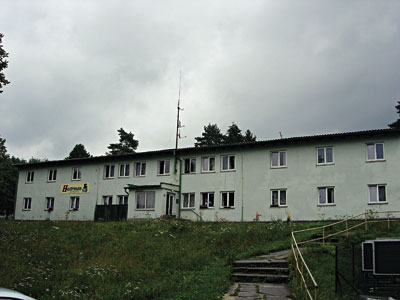
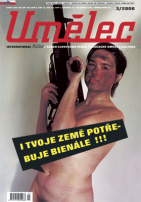











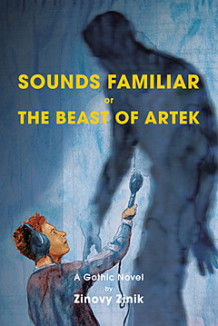











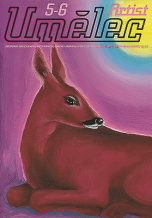
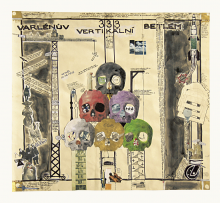




 We Are Rising National Gallery For You! Go to Kyjov by Krásná Lípa no.37.
We Are Rising National Gallery For You! Go to Kyjov by Krásná Lípa no.37.
Комментарии
Статья не была прокомментированаДобавить новый комментарий